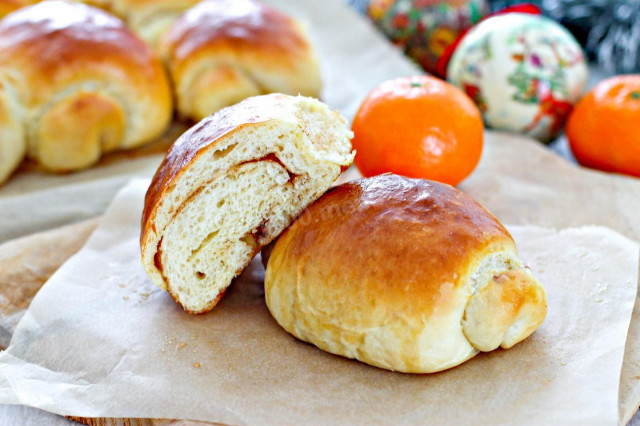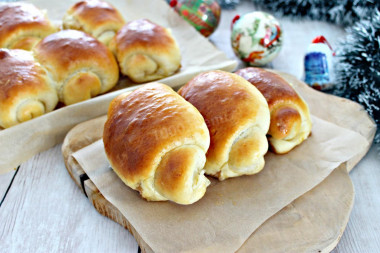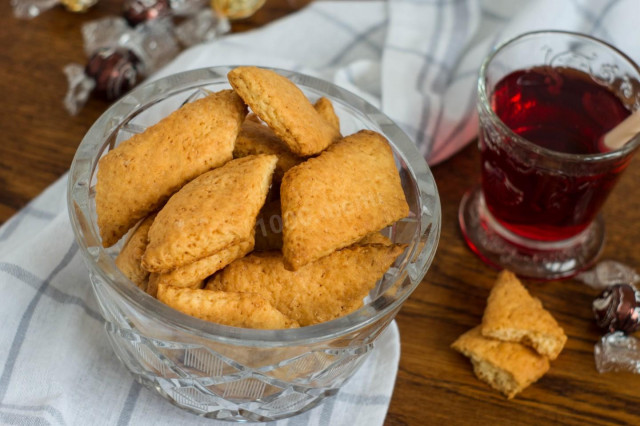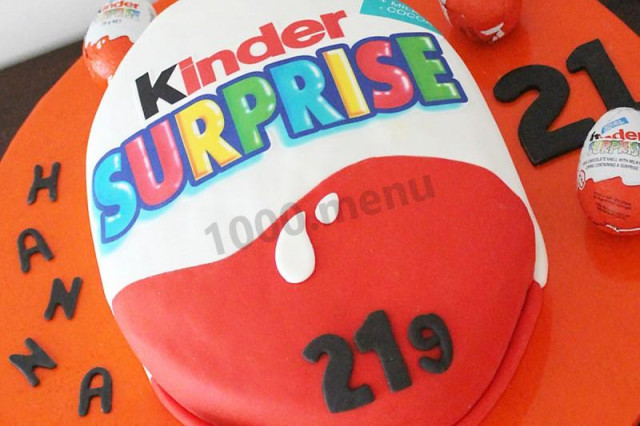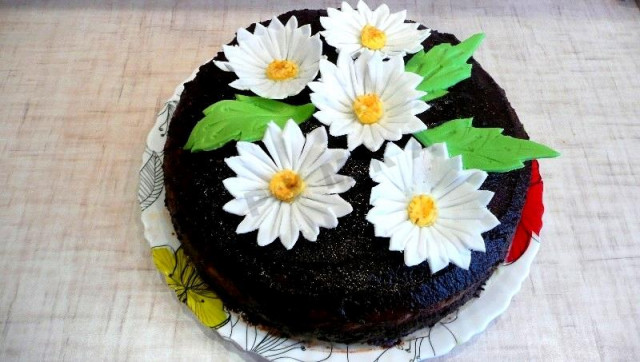Composition / ingredients
Step-by-step cooking
Step 1:

How to make Japanese Hokkaido buns? First prepare the custard dough. To do this, mix cold milk and flour in a saucepan. Put the saucepan on a small fire. With constant stirring, boil the mixture until it thickens. This will happen pretty quickly. Immediately remove the dishes from the heat.
Step 2:

The dough turns out to be similar to a thick jelly or pudding. Cover it immediately with a film in contact and put it away for an hour in the cold. This step is mandatory. The custard dough can be made in advance of the day and left in the refrigerator. It makes it even better.
Step 3:
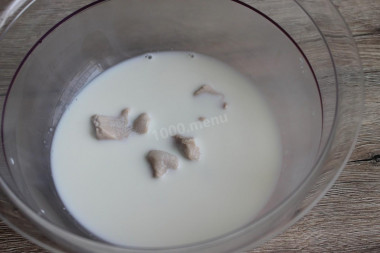
While the dough is cooling, make a sourdough. How to make sourdough? Warm milk (temperature 37-38 degrees) mix with sugar and yeast, mix. Leave the mixture for 15 minutes until a frothy yeast cap rises from above — this means that the yeast is active.
Step 4:
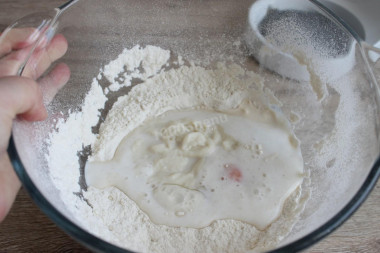
Mix the sifted flour with salt. It is important to sift the flour to saturate it with oxygen. Then the baking will turn out to be airy and will rise well when baking. Add the egg, sourdough and custard cooled dough. Be sure to wash the eggs before use, as even the seemingly clean shell may contain harmful bacteria. It is best to use food detergents and a brush.
Step 5:
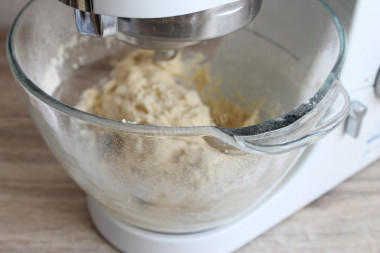
Next, it is better to knead the dough in a mixer. If you have, then do it at a slow speed of 5 minutes. Knead with your hands for 10 minutes. After 5 minutes of kneading, add the melted butter and knead the dough for another 5 minutes.
Step 6:

This is how elastic the dough turns out. Soft, homogeneous. Put it in a proofing bowl for 1.5 hours.
Step 7:
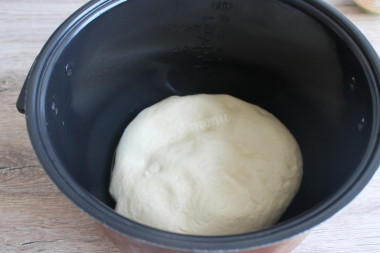
I do it in a slow cooker, in the Multi-cooker mode at 35 degrees, 1.5 hours. I lubricate the cup with vegetable oil.
Step 8:
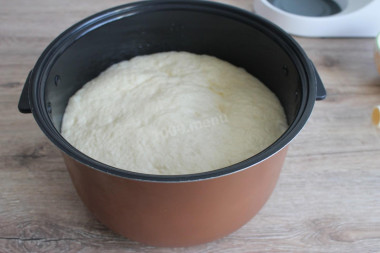
After the prescribed time, the dough will grow in volume. Take it out and immediately mash it on the table with your hands.
Step 9:

Make a cake like this from the dough and divide it into 8 parts. Roll each part into a bun.
Step 10:

For the filling, mix brown sugar and cinnamon.
Step 11:
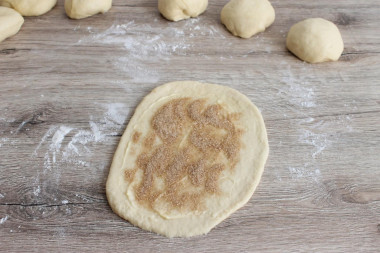
Take a bun and roll it into a layer. Brush it with melted butter. And sprinkle with sugar and cinnamon.
Step 12:
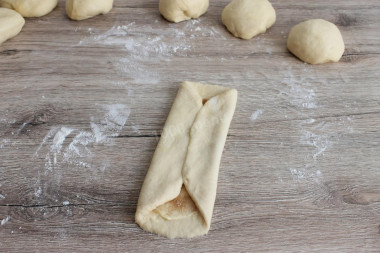
Fold the edges of the tortilla on both sides.
Step 13:
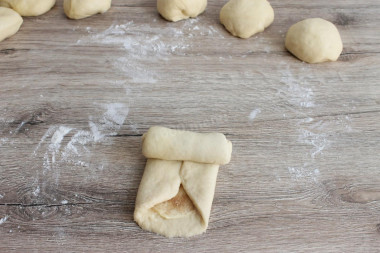
Next, roll the blank roll into a bun. The edges can be pinched. Spread the resulting buns on a baking sheet covered with baking paper.
Step 14:

These are the buns you get. Leave them to proofing for an hour, covered with a film.
Step 15:
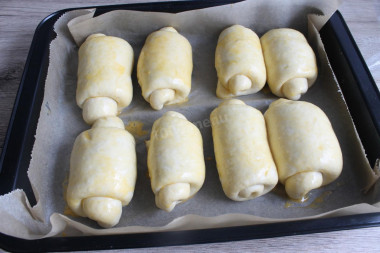
Then lubricate them with beaten egg. Place in a preheated 190 degree oven for 20 minutes.
Step 16:
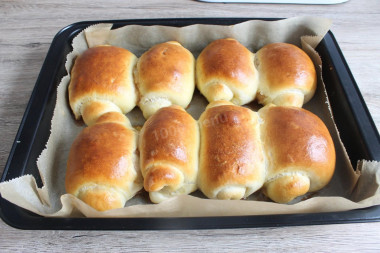
Remove the finished buns from the oven, cool slightly and serve to the table. Enjoy your meal!
Be prepared for the fact that flour may need more or less than indicated in the recipe. Focus not on the amount of flour, but on the desired consistency of the dough. To avoid mistakes, read about flour and its properties!
Butter can be melted in the microwave or in a water bath.
How to melt butter in the microwave?
Cut the butter into small pieces and place it in a special container. To prevent the oil from splashing when heated, cover the oil vessel with a paper towel. The oil should be melted either at the lowest power or in defrosting mode. At first, five seconds will be enough. Next, if the butter has not melted yet, set it again for 5 seconds and start the microwave. Repeat the process several times until the desired result.
How to melt butter in a water bath?
You will need two containers of different diameters. Pour water into a large one and put it on the stove. Place the smaller container on top so that it is submerged in water by about half. Put the sliced butter into it. Under the influence of boiling water, the oil will begin to melt. Stir the oil slightly to speed up the process. As soon as the pieces of oil are completely dissolved, remove the container from the stove.
Keep in mind that everyone's ovens are different. The temperature and cooking time may differ from those specified in the recipe. To make any baked dish successful, use useful information about the features of ovens !
Caloric content of the products possible in the composition of the dish
- Whole cow's milk - 68 kcal/100g
- Milk 3.5% fat content - 64 kcal/100g
- Milk 3.2% fat content - 60 kcal/100g
- Milk 1.5% fat content - 47 kcal/100g
- Concentrated milk 7.5% fat content - 140 kcal/100g
- Milk 2.5% fat content - 54 kcal/100g
- Chicken egg - 157 kcal/100g
- Egg white - 45 kcal/100g
- Egg powder - 542 kcal/100g
- Egg yolk - 352 kcal/100g
- Ostrich egg - 118 kcal/100g
- Whole durum wheat flour fortified - 333 kcal/100g
- Whole durum wheat flour, universal - 364 kcal/100g
- Flour krupchatka - 348 kcal/100g
- Flour - 325 kcal/100g
- Granulated sugar - 398 kcal/100g
- Sugar - 398 kcal/100g
- Butter 82% - 734 kcal/100g
- Amateur unsalted butter - 709 kcal/100g
- Unsalted peasant butter - 661 kcal/100g
- Peasant salted butter - 652 kcal/100g
- Melted butter - 869 kcal/100g
- Salt - 0 kcal/100g
- Brown Sugar - 394 kcal/100g
- Ground cinnamon - 247 kcal/100g
- Fresh yeast - 109 kcal/100g

